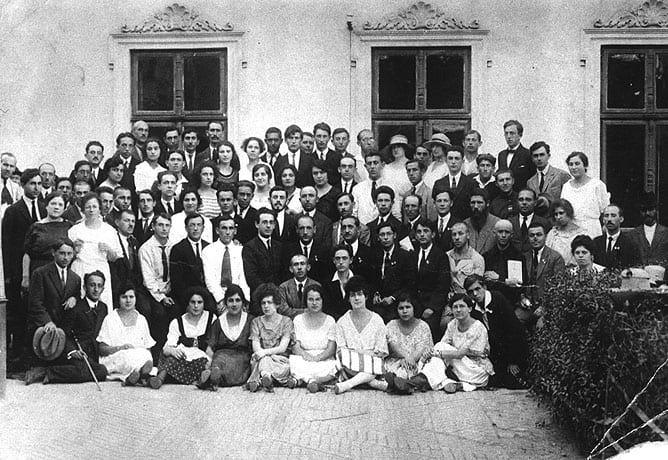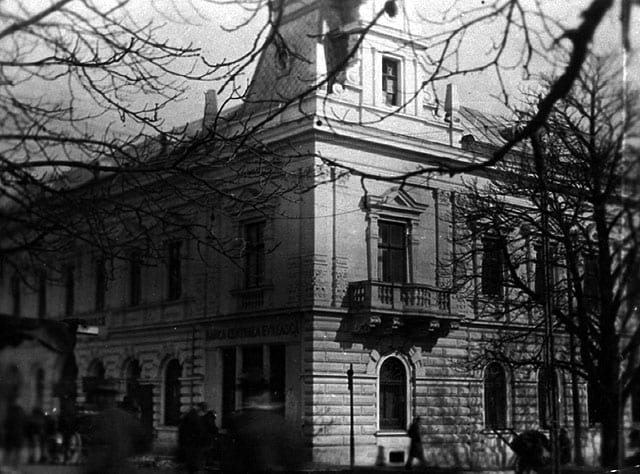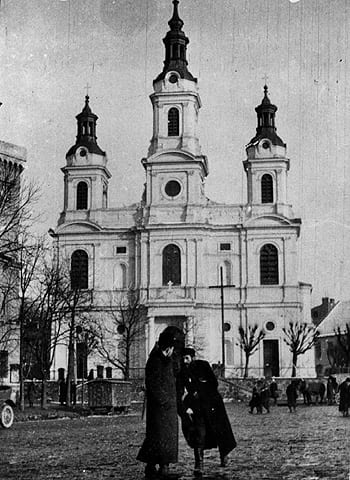“David Falik has been killed by the bullet of Totu and so will die all the country’s enemies, by innumerable bullets which will be fired against the filthy beasts. Totu is a martyr and a hero. Gentlemen of the jury, he must be set free.” (From the closing argument of the leading attorney for the defense in Nicolas Totu’s case, the murder of David Falik.)
It was 1926, in the period historiographers call “between the two World Wars.” Europe was redivided after World War I ended, several years earlier. The Romanians won the historical region of Bucovia (now in Ukraine) in the Continental Monopoly game.
For the Jews of the Bucovian capital Czernowitz, the redistribution of this geographic bounty was nothing less than a tragedy. Their newly Romanian status severed a Golden Age, in which the Jews of Czernowitz thrived for nearly 150 years under the rule of the Slovenian Austro-Hungarian Empire. The Hapsburg Kaisers granted the Czernowitz Jews nearly full rights and the freedom to preserve their Jewish identity. This liberty – as is generally the case – fostered varied and opposing privileges.
Wandering the streets in those days revealed a small, cosmopolitan Jewish world. A Reform community, called “those who go forward,” and an Orthodox community, called “those who remain in place,” lived side-by-side in Czernowitz. This Jewish melting pot was joined by Zionist youth movements, Communists, Bundists, and converts to Catholicism who crossed the street to worship in the local cathedral. Czernowitz Jews spoke a Viennese German dialect, peppered with Yiddish and Ukrainian. Yiddish writers like Itzik Manger and Eliezer Steinbarg lived and wrote in Czernowitz; and the city hosted the 1908 “Czernowitz Conference,” considered to be a dramatic peak in the war between Yiddish and Hebrew. Jewish dominance in the city was evidenced in the 1912 mayorship of Jewish Salo Weisselberger.

But the end of World War I brought an end to the Hapsburg Renaissance in Bucovina. Romanian farmers began to oppress Jews as soon as the Romanian army entered Czernowitz on November 11, 1918; and Ukrainian farmers joined the Romanian rioters in the mid-20s.
Romania had a long history of anti-Semitism. Despite its commitment in the Berlin Congress of 1878 to grant Jews equality, the Romanian government failed to overcome its unconditional reflex for discriminating against its Mosaic citizens. One explanation for that is envy – plain and simple. The data speaks for itself. In the early 20th Century, Romanian Jewry comprised some 4.6% of the population. They held 31% of Romania’s industrial and commercial enterprise. A Romanian citizen who traveled by train rode on rails laid by the country’s leading and Jewish tycoon Max Auschnitt aka the “Iron King.” When that same traveler went to a bar, he got drunk on beer brewed by the Neuman brothers, owners of the largest and most modern liquor factory in Romania.
The Romanian government recognized the problem, and instead of solving it, added fuel to the fire, launching a “Romanianization” policy. The underlying principle of this racist policy was exclusion of Jews from the public sector thereby sapping their power. To illustrate its impact, note that during the Austro-Hungarian period a quarter of Czernowitz’s Jews served in public roles.

With enactment of the Romanianization laws, the Romanian government issued a regulation determining that public institutions in the nation use only the Romanian language. The continued employment of senior officials was contingent upon mandatory testing for their proficiency in that language. The majority of Jewish officials, who spoke German, thus found themselves unemployed.
The Romanians so feared the Jews that then-propaganda minister Mihai Antonescu ordered that all the lead molds of records preserving the works of Jewish composers and musicians be destroyed.
A high point in the annals of Romanianization involves a Jewish boy named David Falik. The story begins with the wrongful failure in matriculation exams of 40 out of 69 Jewish students in a high school in Czernowitz. That their failure was tendentious is witnessed in the fact that all the non-Jewish Romanians passed the exam. The parents of the failed students refused to remain silent. They quickly gathered at the school’s gates to protest the fabricated test results.
The German “Czernowitzer Morgenblatt” newspaper reported that when an exam proctor named Diaconescu left the school grounds, Jewish student David Falik asked him, “Why did you do that?” Diaconescu replied, “It’s none of your business!” Falik shouted, “Down with Diaconescu,” and the gathered protestors began to attack the Romanian teacher. Diaconescu was actually escorted to safety by two other Jews, a police officer named Rotenberg and a Jewish wagon driver who happened on the scene.

The “Matriculation Scandal” headline rocked the Romanian soul. The average Romanian could not stomach the fact that inferior Jews dared to oppose and attack a Romanian teacher – their flesh and blood. Indictments for attacking a public official were issued to 24 Jews, including David Falik. When the Jews left the courthouse in Czernowitz – on the second day of the trial, November 10, 1926 – a student named Nicholas Totu from the city of Iasi was waiting for them. Nicolas pulled out a pistol and shot twice “point blank” at David Falik, who fell in a pool of blood.
More than 3,000 Romanian attorneys volunteered to defend Nicolas Totu. His trial was rigged from beginning to end, and when the jury acquitted him despite his confession that he murdered Falik in cold blood – the crowd roared in joy. Wrapped in a Romanian flag, Totu was carried on his supporters’ shoulders out of the courtroom.
The murder of David Falik and the kangaroo-court trial of Nicolas Totu shocked Romanian Jews. But most nonetheless chose to repress their circumstances and carry on with their lives. Until 16 years later, more than half of Romanian Jewry was exterminated in the Holocaust.
(Translated by Varda Spiegel)